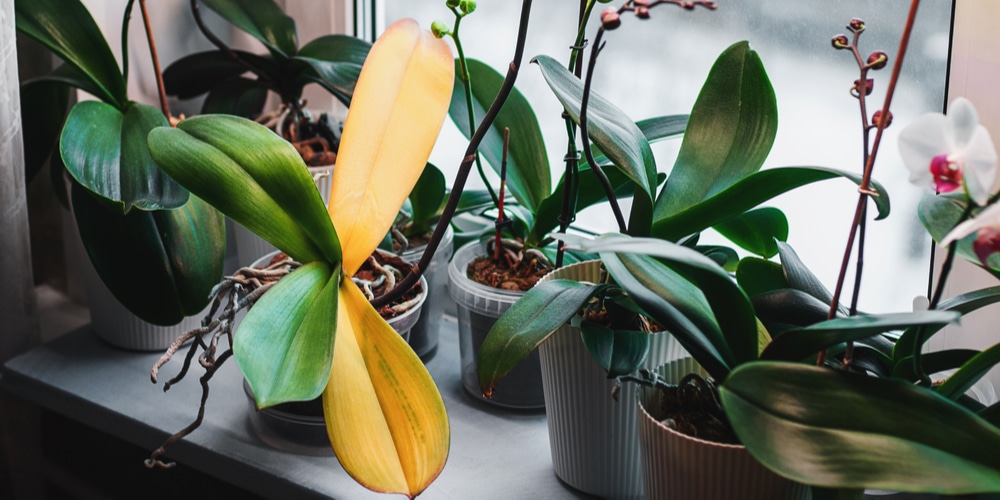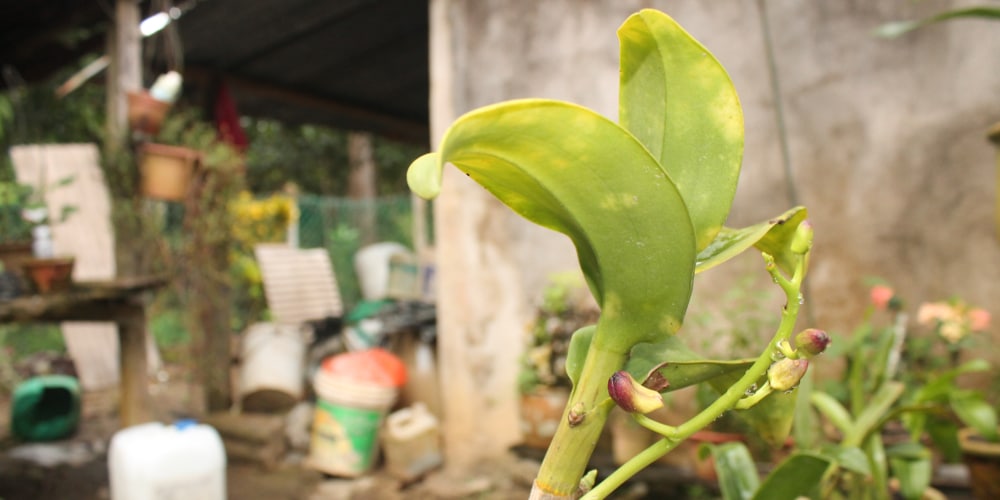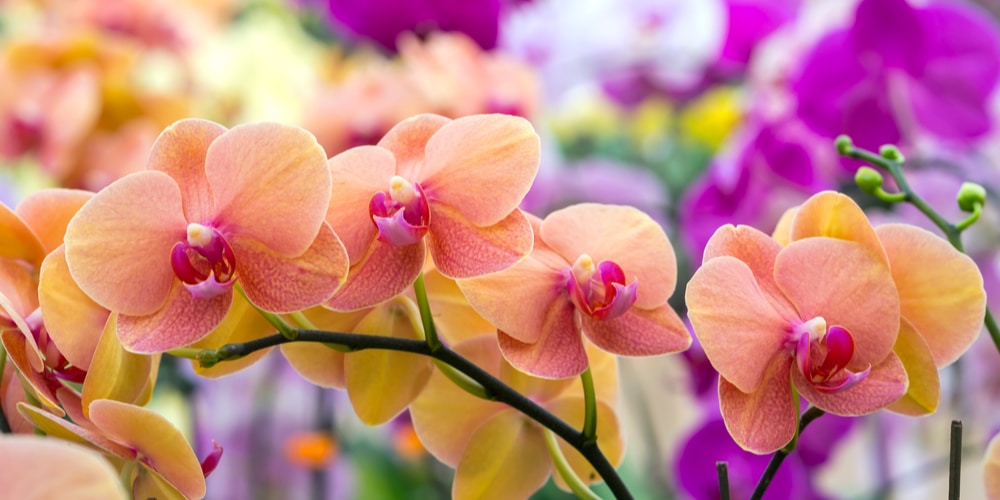The appearance of its leaves most often judges the overall health of any plant. Orchids are no different. Most people love the orchid plant for its calming effect on the environment or as additional pieces to décor, thus giving the plant a lot of tender love and care. However, at times, the plant may respond differently and unexpectedly for some reason. Most often than not, through the yellowing of its leaves.
Why are my orchid leaves turning yellow?
If you think you have given your orchids all they need but still react this way, “why are my orchid leaves turning yellow?’ It becomes the next question that will linger in my mind. It is critical to note that orchids can be susceptible to several factors, including their surroundings, diet, parenting etc. If not considered, these factors may cause the yellowing of your orchid leaves.
Let us dive deeper into some of the common culprits for yellow leaves in orchids.
Overwatering the plant
Water is undoubtedly great for plats; however, as they say, too much of anything is poisonous. Ideally, orchids do not require constant watering. Once every 5-6 days should be enough, of course, depending on the weather and how big the container housing your plant is. Overwatering orchids is detrimental to the plant’s health as the excess water limits oxygen reaching its roots. The lack of oxygen in the roots discourages growth, and instead, the roots start rotting.

Typically, the roots of your orchid plant may indicate overwatering when they begin to change colour from a brown to a black colour and appear mushy with some rotting portions. These colour indicators should guide you when to water your plant and when to stop.
- Green roots- the orchids are getting the right amount of water.
- Brown and soggy roots are signs of overwatering.
- Greyish or whitish roots- the plant is getting insufficient water.
Additional factors that may affect the amount of water your orchids require include the size of the pot. For a 4-inch pot, it is advisable to water once every 5-6 days, whereas for 6-inch pots, watering once after seven days should be enough. Also, note that the potting medium and the type of water used may affect the plant. Rainwater is best for watering as it does not contain any added chemicals such as chlorine.
Bacterial and Fungal Diseases
The most obvious signs of a diseased orchid plant are the leaves. It starts with a few yellow spots that eventually grow into large black rots or brown. Fungal infections are the primary cause for yellowing leaves as the plant gradually develops yellow areas on the bottom part of its leaves that spreads to the upper side after a while. If a foul smell may accompany the yellow leaves, the infection could be bacterial.
Nevertheless, any of these signs should promptly be followed by remedies to prevent the further spread of the disease. At the sight of yellow spotting on the orchid leaves, separate the sick plant from the rest. You can use a sharp, sterile razor blade or a pair of scissors to remove the infected area and spray a fungicide on it.
Incorrect Lighting
Orchids do exceptionally well in strong indirect light. It is pretty noticeable that an orchid placed somewhere in a well-lit room does well compared to one that sits next to the window directly facing the sun. Directly exposing them to the sun may cause burning instead. The three fundamental aspects of light to consider include:
Quality- This refers to the amount of red, far-red, blue and green light from the light source. Natural light is best as it gives the plant the full spectrum and the correct distribution of wavelengths.
Intensity- This refers to the strength of light. Inadequate light intensity leads to weaker plants and less energy, thus few flowers.
Duration- It is essential to ensure that the orchids get a consistent amount of light during the day and night. Using artificial light timers could help in keeping the photoperiod constant every day.
The best position for your orchid plant is close to a window facing north or east- 6 hours of sunshine a day should be enough to promote flowering. This is because the light is an essential part of how plants make their food from water and carbon dioxide- photosynthesis. On the other hand, inadequate light may promote growth and prevent flowering.
The Wrong Temperatures
Different orchid species have other temperature specifications. The average temperatures could range between 65 to 85 degrees Fahrenheit during the day and 60 to 70 Fahrenheit in the evening. Since orchids prefer warmer temperatures, very low temperatures result in yellow leaves. Therefore, it is advisable to keep orchids away from fans, open windows, or air conditioners. Going a bit higher in temperature (90 to 95 degrees Fahrenheit) for a few hours could also suit the plant as long as the humidity and air circulation are right.
Why are my orchid leaves turning yellow: Conclusion
The next time you notice yellowing in your orchid leaves, one of these factors could be the problem. Remember to go easy on your plant by monitoring its behavior before troubleshooting the problem. Adjusting these factors should restore the health of your plant.

